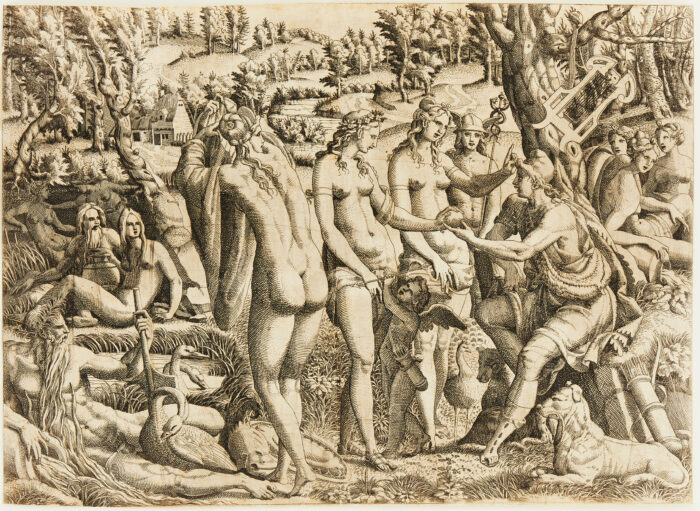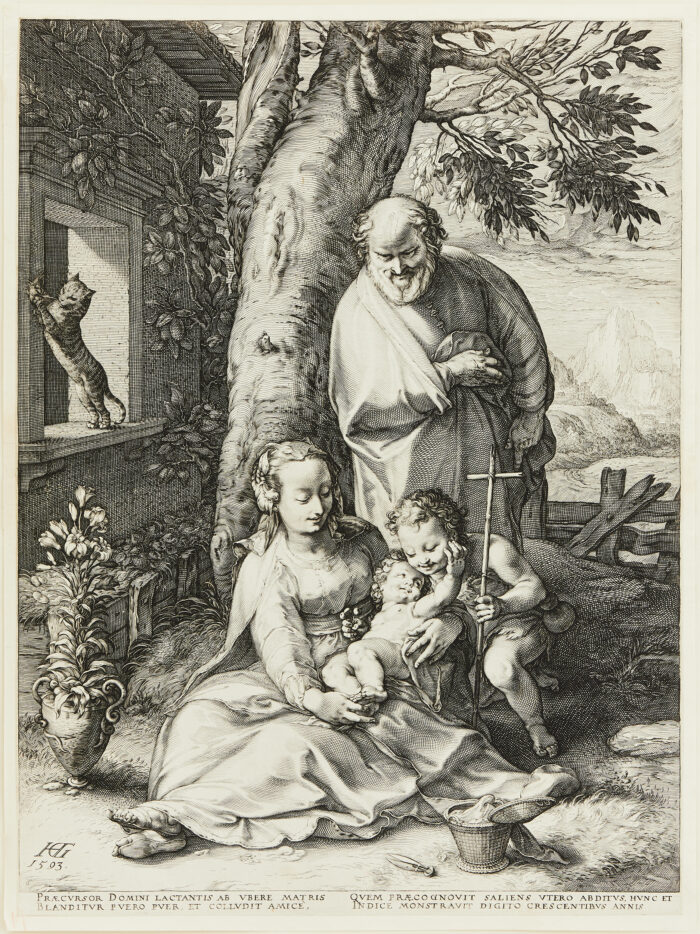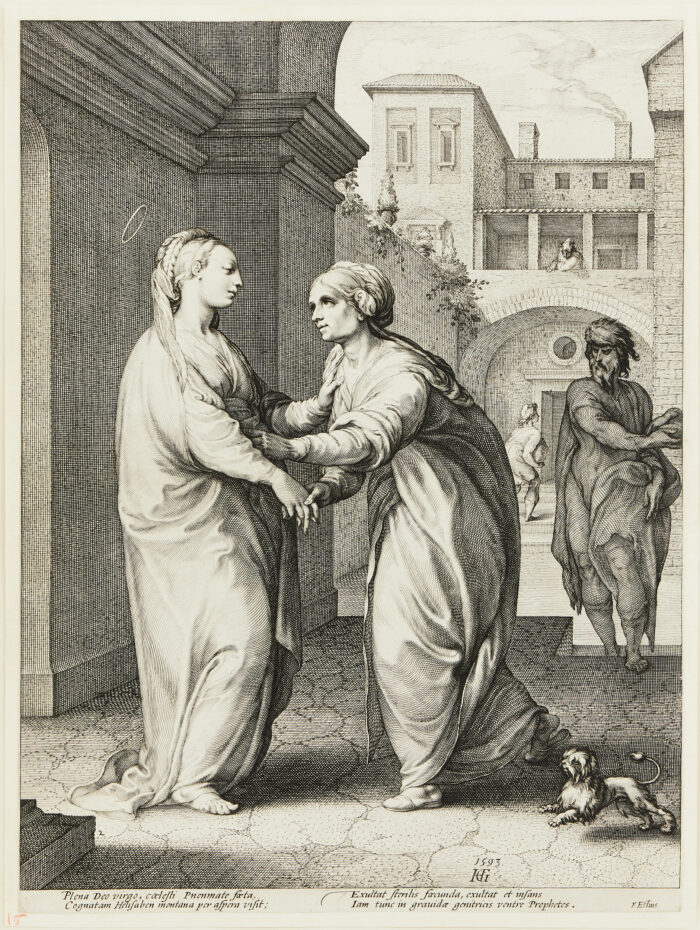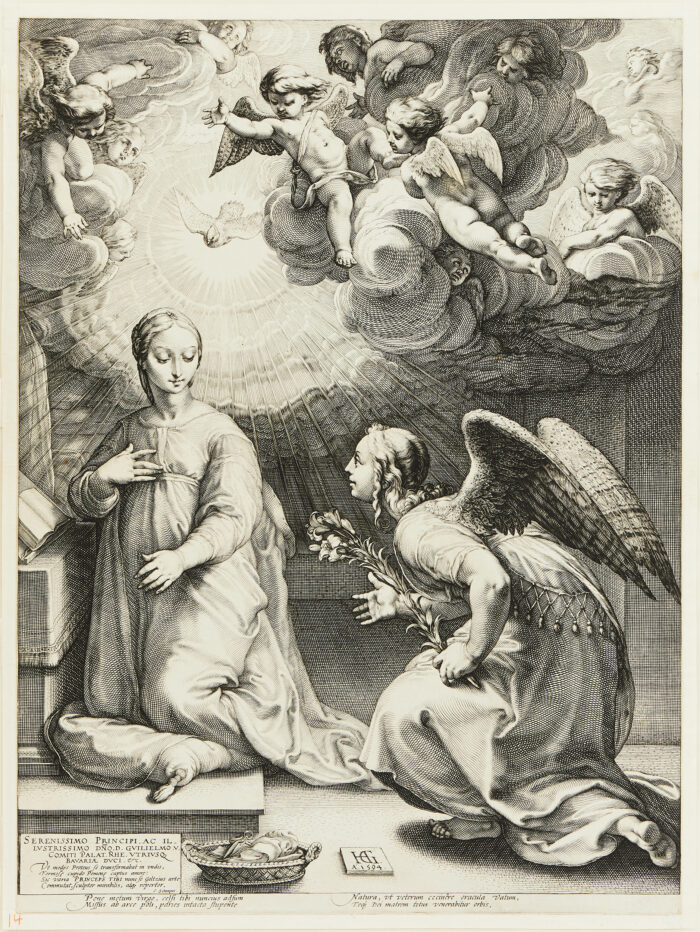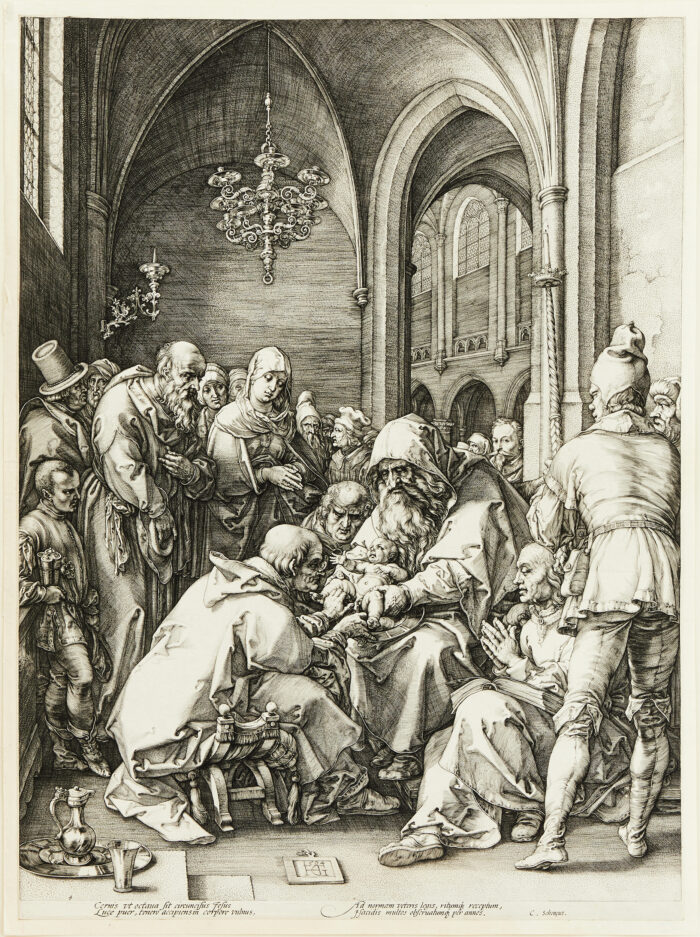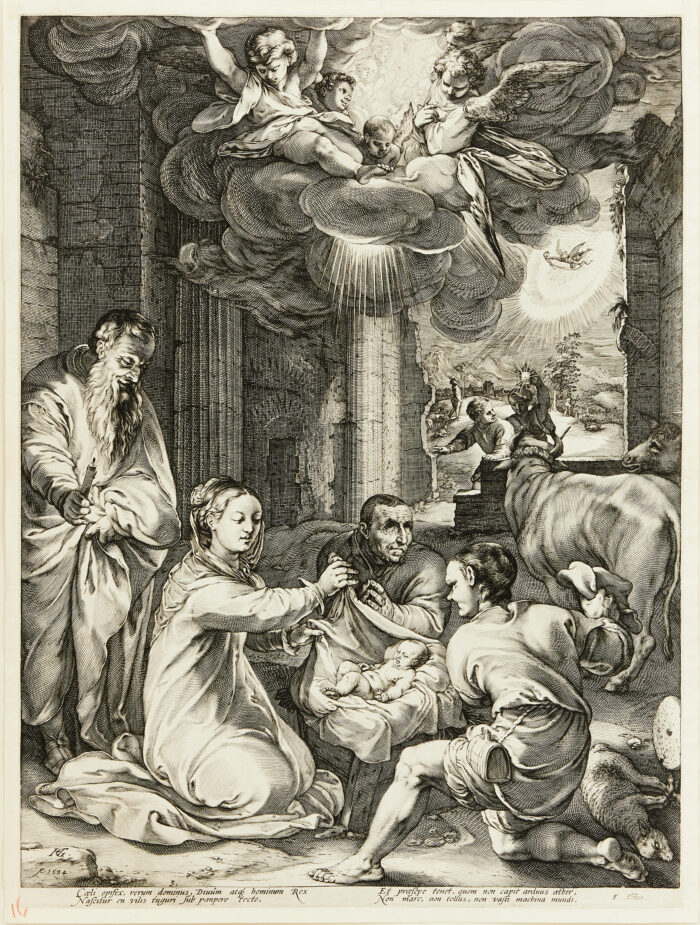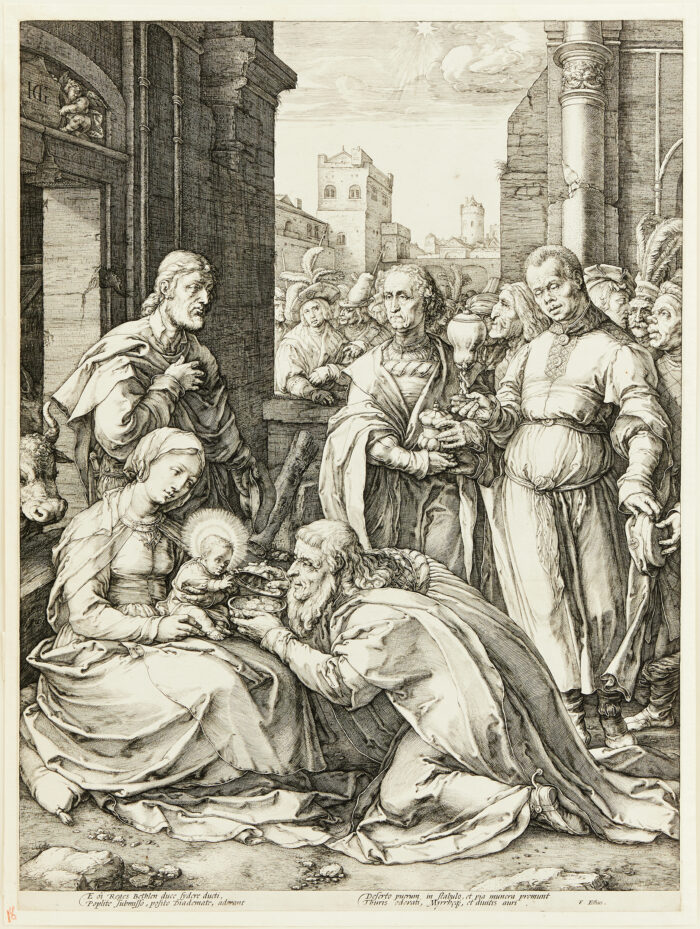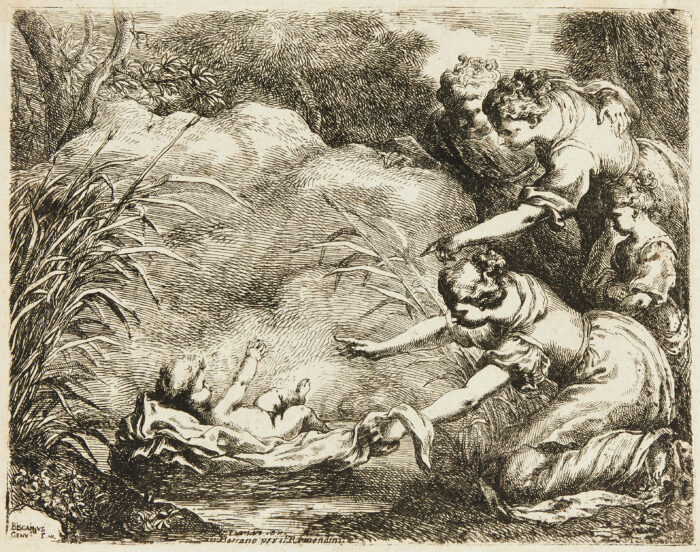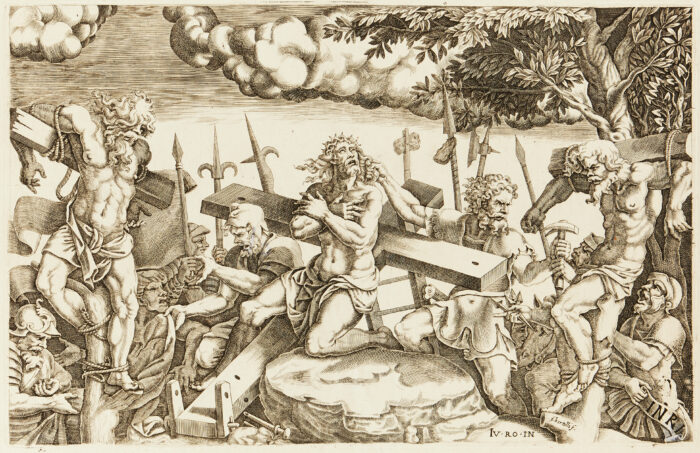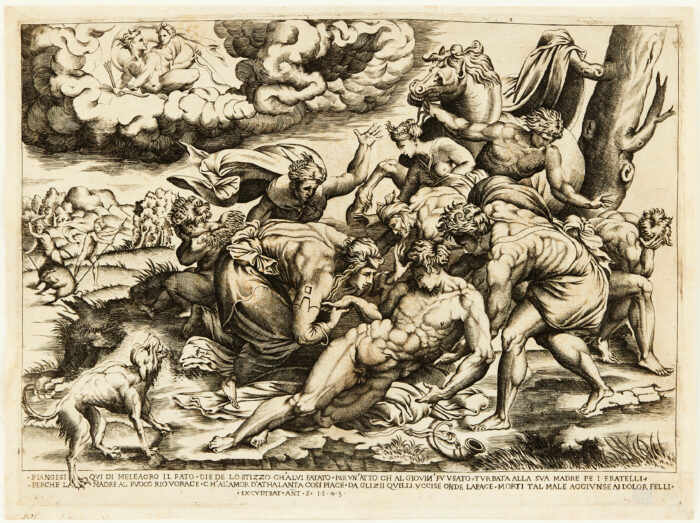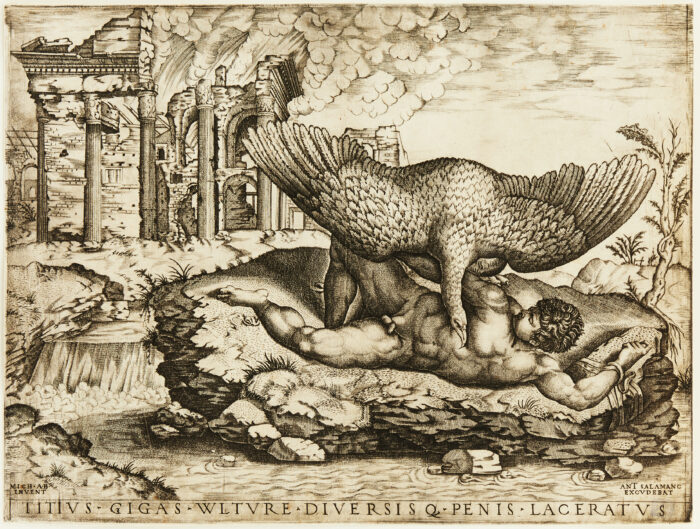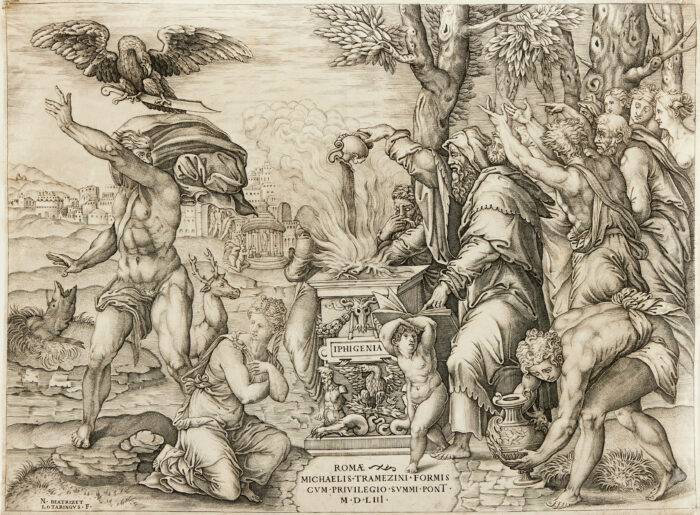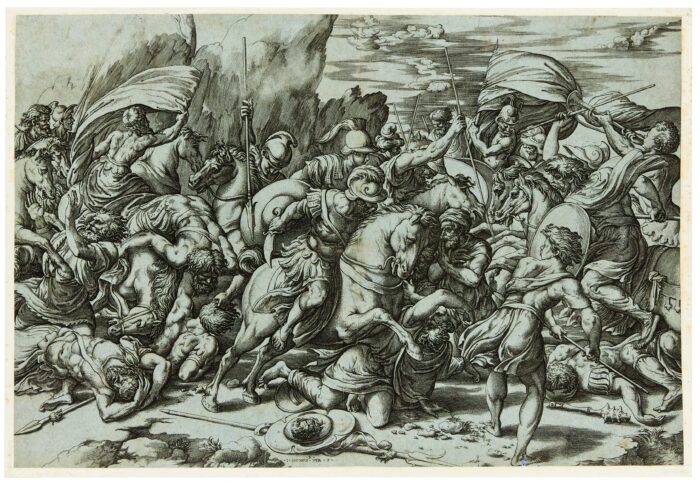The Judgment of Paris
Monday, April 7th, 2025Jean Mignon(France active circa 1535-circa 1555). After Luca Penni (Italy 1500-1556). “The Judgment of Paris”. Etching on laid paper, with a small fleur-de-lys watermark, S. 31.2×42.7 cm.
Bartsch 72 (as Anonymus); Zerner 40. Circa 1544-1545.
According to the British Museum, London, where there is another impression of this etching, this is the first plate, “From a set of six works representing various episodes from the Trojan war. Although sometimes adapted from plates engraved by Marcantonio after Raphael, the original compositions are nevertheless attributed to Penni. For a discussion of these sources, see Cordellier, Luca Penni. Un disciple de Raphal Fontainebleau’, Paris 2012, pages 47-59. The Muse du Louvre keeps the original drawing for the present etching (inventory number 1395) though, in the present case, the landscape is Mignon’s own invention. Also see ‘cole de Fontainebleau’, Paris 1972, catalogue number 413. Penni’s Judgment of Paris’ in turn derives most directly from Marcantonio’s famous engraving after Raphael (see Bartsch 245).
PROVENANCE
The collection of Engineer and Major Frank Bensow (1883-1969), with the ink stamp verso (Lugt 982c).
